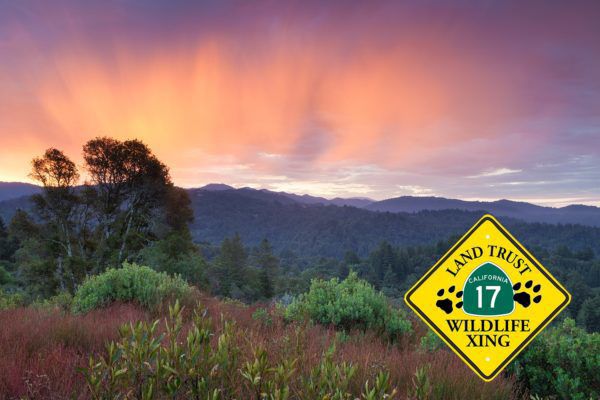Several local agencies are working towards creating a way for wildlife to cross Highway 17 without causing vehicle-animal collisions. Still in the early stages of implementing the project, California Department of Transportation (Caltrans) hosted a public information meeting in Scotts Valley last week.
The project is a partnership with Caltrans, the Land Trust of Santa Cruz County and Santa Cruz Regional Transportation Commission. The cost of the proposed project is estimated at $5.5 million, with $5 million of those funds secured through Measure D, passed in 2016. Additionally, the Land Trust of Santa Cruz County is entering into an agreement with the SCCRTC for $3 million secured for the project.
“I am pretty stoked, we as a team are all pretty excited about this,” said Aaron Henkel, senior transportation engineer of Caltrans District 5.
Biologists Nancy Siepel and Morgan Robertson were both at the presentation on Wednesday evening to answer questions and explain the project. The concept is to make an undercrossing, long and wide enough, for animals to go through safely without having to cross the busy highway.
According to Siepel, data collected showed Laurel Curve as a critical linkage point for mountain lions and other wildlife in crossing over Highway 17. At the project location, 460 acres of mostly undeveloped land on both sides of the highway have been preserved in a conservation easement by the Land Trust of Santa Cruz County. This made the area of Laurel Curve the ideal spot to create the undercrossing.
With high traffic volumes averaging 61,500 vehicles a day, traveling over this section of Highway 17 combined with a median concrete barrier and a lack of adequate culvert or bridge under crossings, there have been frequent animal-vehicle collisions. In the last 15 years, there have been 55 deer and five mountain lion hit and killed, according to Tanya Diamond, wildlife ecologist.
With both sides of the highway at the Laurel Curve protected by easements already established, it will allow the entire corridor to be protected. Currently, Highway 17 severs the Santa Cruz Mountains in two—creating a challenge for species such as mountain lions to secure territory, mate or find food. According to Robertson, what the GPS/radio telemetry, wildlife camera and roadkill data shows mountain lions, deer, bobcats etc. are going onto the highway to cross over, causing the animal-vehicle collisions.
Caltrans has worked on similar projects using tunnels or bridges to have wildlife cross highways 1, 68, 101, 152 and 280. Once complete, the undercrossing will be 60 feet long, 16 feet wide with laid back slopes and 12 feet high.
Siepel stated this will leave plenty of space for various specious of wildlife to cross safely. Other additions included in the project are adding escape ramps and wildlife guards to prevent animals from entering the highway from a local road.
Questions were raised by members of the public about what impact construction might have on commuters as well as residents who live near the project site.
Erin Hackett, who lives on Laurel Road, inquired about what traffic patterns might look like for residents because a previous storm allows only one way in and one way out. Henkel responded stating, the project would not begin construction until the fall of 2021. This means, there is a strong likelihood of other roads being opened to allow more access by that time. But Henkel said there will be activity near Laurel Road to finish construction.
A design plan is expected by this summer, but according to Henkel it will take a few more years before all the plans for construction are finalized and a contractor is hired. When construction does start the project will take an estimated 10 months to complete, and traffic will be lightly impacted, but once the space for the tunnel is cleared work will continue with no impact to traffic.
The project will be funded to monitor for three years after it is complete to help biologists continue tracking the wildlife activity along Laurel Curve.
“This project is under budget and ahead of schedule,” said Henkel, who stressed the importance of working with all the agencies together as a collaborative effort. “This is for the animals.”











